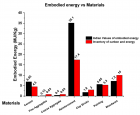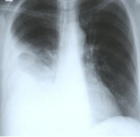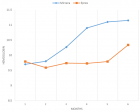Abstract
Literature Review
Environmental impact assessment of demolition of a building in India-A case study
Deepak Bansal*, Murlidhar Kamat, Rahul Ralegaonkar and Yashika Bansal
Published: 03 August, 2022 | Volume 6 - Issue 1 | Pages: 042-049
Buildings are demolished, when they outlived their service life, become structurally/functionally unfit, or have been built illegally. In India, an RCC framed, 40-storied high-rise building, with a built-up area of about 75,000 sqm, built without relevant approvals along with lots of violations of building bye-laws, has been demolished. There is nothing new in this demolition process, but its effect on the environment is unavailable. A study has been conducted to understand the environmental impact of this demolition. Based on the main primary construction materials, the embodied energy of this demolished building has been computed as 7.07 GJ/sqm.
The civil construction cost of the building was found to be about INR 200 Crores (USD 27 million, assuming a conversion rate of 1 USD 75 INR in the year 2022). Expected GHGs emissions corresponding to this embodied energy were estimated as 42.42 × 103 MT. Energy in the demolition of the building has been computed to be about 8.7 GJ/sqm. The situation, in which this building can be retrofitted and made compliant with local building bye-laws, has been analyzed for its environmental impact.
Read Full Article HTML DOI: 10.29328/journal.acee.1001039 Cite this Article Read Full Article PDF
Keywords:
LCA; LCE; Buildings; High-rise; Demolition; Embodied energy; GHGs; Construction cost
References
- Asif M, Muneer T, Kelley R. Life cycle assessment: A case study of a dwelling home in Scotland, Building and Environment, 2007; 42:1391–1394.
- Keoleian GA, Blanchard S, Reppe P. Life cycle energy, costs, and strategies for improving a single-family house. Journal of Industrial Ecology. 2001; 4(2):135–156. doi:10.1162/108819800569726.
- Bansal D, Minocha VK, Kaur A. Embodied Energy, CO2e, and Construction Cost of Indian Housing: Model of Low-Rise versus High-Rise Development. Journal of Architectural engineering. 2021; ASCE. DOI: 10.1061/(ASCE)AE.1943-5568.0000480.
- Bansal D, Minocha VK. Analysis of low-rise vs High Rise development of affordable housing in India, for cost and energy optimization. International Conference on Clean Technologies and Sustainable Development by NITTTR Chandigarh and DOST. GOI. Chandigarh. 2018; 23-24:2018:105-111.
- Yvan D, Rousse D, Quesada G. Sustainable Buildings: An Ever-Evolving Target, Sustainability. 2011; 3:443-464.
- Deepak B, Vijay KM, Arvinder K. Initial or recurring embodied energy: Importance in Indian affordable Housing, 2021; 49. https://doi.org/10.1016/j.jobe.2022.104072.
- Devi LP, Shivkumar P. A case study on life cycle energy of residential buildings in southern India. Energy and Buildings. 2014; 80:247–259. doi:10.1016/j.enbuild.2014.05034.
- Central Public Works Department (CPWD 2019). Plinth Rates. https://cpwd.gov.in/Publication/PLINTH_AREA_RATES_2019.pdf -Accessed on 5-November-2020
- Bribián IZ, Capilla AV, Usón AA. Life cycle assessment of building materials: Comparative analysis of energy and environmental impacts and evaluation of the eco-efficiency improvement potential: Building and Environment. 2011; 46:1133-1140.
- Dixit MK, Fernández-Solís Sarel Lavy JS, Charles HC. Need for an embodied energy measurement protocol for buildings: A review paper, Renewable and Sustainable Energy Reviews. 2012; 16:3730– 3743.
- Sartori I, Hestnes AG. Energy use in the life cycle of conventional and low-energy buildings: A review article. Energy and buildings. 2007; 39:249-257.
- Barbara R, Marique AF, Glaumann M, Reiter S. Life-cycle assessment of residential buildings in three different European. Building and Environment. 2012; 51:395-401.
- Ramesh T, Ravi P, Kumar SK. Life Cycle Energy Analysis of a Multifamily Residential House: A Case Study in Indian Context. Open Journal of Energy Efficiency. 2013; 2:34-41 doi:10.4236/ojee.2013.21006 Published Online March 2013 (http://www.scirp.org/journal/ojee
- Praseeda KL, Venkatarama Reddy BV, Mani M. Embodied and operational energy of urban residential buildings in India. Energy and Buildings. 2016; 110:211–219.
- Adalberth K. Energy use during the life cycle of single-unit dwellings. Building and Environment. 1997; 32(4):321–329. doi:10.1016/S0360-1323(96)00069-8.
- Ezema IC, Olotuah AO, Fagbenle OI. Estimating Embodied Energy in Residential Buildings in a Nigerian Context, International Journal of Applied Engineering Research. 0973-4562: 2015;10:24:44140-44149.
- Bardhan S. Embodied energy analysis of multi storied residential buildings in urban India, Ecology and the Environment. 2011; 143. doi:10.2495/ESUS110351.
- Pacheco-Torres R, Jadraque E, Roldán-Fontana J, Ordóñez J. Analysis of CO2 emissions in the construction phase of single-family detached houses. Sustainable Cities and Society. 2014; 12:63–68. doi:10.1016/j.scs.2014.01.003.
- Paulsen JS, Sposto RM. A life cycle energy analysis of social housing in Brazil: Case study for the program “MY HOUSE MY LIFE”. Energy and Buildings. 2013; 57:95–102. doi:10.1016/j.enbuild.2012.11.014.
- Kashif A, Rehman R, Fuwad A, Shahid MK, Dayarathne HNP, Jamal A, Aftab MN, Mainali B, Choi Y. Current advances in the classification, production, properties and applications of microbial biosurfactants - A critical review. Adv Colloid Interface Sci. 2022 Aug;306:102718. doi: 10.1016/j.cis.2022.102718. Epub 2022 Jun 12. PMID: 35714572.
- Dong YH, Lara J, Peggy C, Poon CS. Comparing carbon emissions of precast and cast-in-situ construction methods – A case study of high-rise private building, Construction and Building Materials. 2015; 99:39–53.
- Shukla A, Tiwari GN, Sodha MS. Embodied energy analysis of adobe house. Renewable Energy. 2009; 34:755–61.
- Sengupta N. Growth of Housing Sector in India — Application of Cost-effective Construction Technologies to reduce Greenhouse Gas Emission, IE(I) Journal–AR. 2010; 91:5-16.
- Sengupta N, Roy S, Guha H. Assessing embodied GHG emission reduction potential of cost-effective technologies for construction of residential buildings of Economically Weaker Section in India. Asian Journal of Civil Engineering. 2018; 19(2):39–156, https://doi.org/10.1007/s42107-018-0013-8
- Bansal D, Ramkishore S, Sawhney RL. Effect of construction materials on embodied energy and cost of buildings—A case study of residential houses in India up to 60 m2 of plinth area, Energy and Buildings. 2014; 69:260-266.
- Debnath A, Singh SV, Singh YP. Comparative assessment of energy requirements for different types of residential buildings in India. Energy and Buildings. 1995; 23:141–146.
- Reddy BVV, Jagadish KS. Embodied energy of common and alternative building materials and technologies. Energy and Buildings. 2003; 35:129–137.
- Chani PS, Najamuddin, Kaushik SK. Comparative Analysis of Embodied Energy Rates for Walling Elements in India. IE (I) Journal-AR. 2003; 84:47-50.
- Deepak B, Minocha VK, Kaur A. Component-wise embodied energy analysis of affordable houses in India. Asian Journal of Civil Engineering. 2020; 21 (1):137–145. https://doi.org/10.1007/s42107-019-00184-4.
- Sengupta N. Use of cost-effective construction technologies in India to mitigate climate change. General Articles. Current Science. 2008; 94(1):38–43.
- Devi LP, Palaniappan S. Life cycle energy analysis of a low-cost house in India, International journal of construction education and research. 2018. https://doi.org/10.1080/15578771.2018.1476935.
- Deepak B, Vijay KM, Arvinder K, Dakwale VA, Ralegaonkar RV. Reduction of embodied energy & construction cost of affordable houses through efficient architectural design: A case study in Indian Scenario, Advances in Civil Engineering, 2021; 2021: Article ID 5693101:11. https://doi.org/10.1155/2021/5693101.
- National Building Code 2016; 2016. Bureau of Indian Standards, http://www.bis.org.in/sf/nbc.html -Accessed on 2-March-2015
- Thapa S, Panda GK. Energy Conservation in Buildings – a Review. International Journal of Energy Engineering Aug. 2015; 5:4: 95-112.
- He Y, Yu H, Ozaki A, Dong N, Zheng S. A detailed investigation of thermal behavior of green envelope under urban canopy scale in summer: A case study in Shanghai area. Energy and Buildings. 2017; 148:42–154.
- Omrani S, Garcia-Hansen V, Capra BR, Drogemuller R. Effect of natural ventilation mode on thermal comfort and ventilation performance: Full-scale measurement. Energy and Buildings. 2017; 156:1–16.
- Praseeda KL, Monto Mani, Venkatarama Reddy BV. Assessing impact of material transition and thermal comfort models on embodied and operational energy in vernacular dwellings (India). Energy Procedia 2014; 54:342 – 351.
- Arvind C, Tiwari GN. Thermal performance and embodied energy analysis of a passive house – Case study of vault roof mud-house in India. Applied Energy 2009; 86:1956–1969.
- Energy in Building Materials: Final Report. Development Alternatives, Building Materials and Technology Promotion Council (BMTPC). bmtpc.org. 1995.
- Inventory of Carbon & energy. University of Bath. Ver 20. Jan 2011. bath.ac.uk/mech- engg/sert/embodied.
- Stephan A, Crawford RH, de Myttenaere K. Towards a more holistic approach to reducing the energy demand of dwellings. Procedia Engineering. 2011; 21:1033-1041.
- Bjørneboe MG, Svendsen S, Heller A. Evaluation of the renovation of a Danish single-family house based on measurements. Energy and Buildings 2017; 150:189–199.
- Bhattacharjee B. Sustainability of concrete construction in Indian context, The Indian Concrete Journal. 2010; 45-51.
- Williams D, Elghali L, Wheeler R, France C. Climate change influence on building lifecycle greenhouse gas emissions: Case study of a UK mixed-use development. Energy and Buildings. 2012; 48:112–126.
- Adalberth K. Energy use during the life cycle of buildings: A method. Building and Environment. 1997; 32(4):317–320. doi:10.1016/S0360-1323(96)00068-6.
- Abey ST, Anand KB. Embodied Energy Comparison of Prefabricated and Conventional Building Construction. Journal of Institution of Engineers (India). Series A. 2019; 10:1007/s40030-019-00394-8.
- Bilec M, Ries R, Matthews HS, Sharrard AL. Example of a hybrid life-cycle assessment of construction processes. Journal of Infrastructure Systems. 2006; 12(4):207–215. doi:10.1061/(ASCE)1076- 0342(2006)12:4(207).
- Chen TY, Burnett J, Chau CK. Analysis of embodied energy use in the residential building of Hong Kong: Energy and Buildings 2010; 42:735–744.
- Ramesh T, Ravi P, Shukla KK. Life cycle approach in evaluating energy performance of residential buildings in Indian context, Energy and Buildings. 2012; 54: 259–265.
- Yaun C, Rpbert RJ, Shuhua L. The embodied energy and emissions of a high-rise education building: A quantification using process-based hybrid life cycle inventory model, Energy and Buildings. 2012; 55: 790-798.
- The European Parliament and the Council of the EU. Directive 2010/31/EU of the European parliament and of the council of 19 May 2010 on the energy performance of buildings (recast); 2010.
- Oyarzo J, Peuportier B. Life cycle assessment model applied to housing in Chile. Journal of Cleaner Production. 2014; 69: 109-116. doi:10.1016/j.jclepro.2014.01.090.
- Utama A, Gheewala Shabbir H. Indonesian residential high-rise buildings: A life cycle energy assessment. Energy and Buildings. 2009; 41: 1263-1268.
- Han MY, Chen GQ, Ling Shao JS, Li A, Alsaedi B, Guo AS, Jiang MM, Ji X. Embodied energy consumption of building construction engineering: Case study in E-town, Beijing, Energy and Buildings. 2013; 64: 62–72.
- Ramesh T, Prakash R, Shukla KK. Life cycle energy analysis of buildings: An overview. Energy and buildings. 2010; 42: 1592-1600.
- Dixit MK, Fernández-Solís JL, Lavy S, Culp CH. Identification of parameters for embodied energy measurement: A literature review, Energy and Buildings. 2010; 42: 1238–1247.
- Dixit MK. Embodied energy analysis of building materials: An improved IO-based hybrid method using sectoral disaggregation, Energy. 2017; 124: 46-58.
- Lu Y, Zhanga N, Chen J. A behavior-based decision-making model for energy performance contracting in building retrofit, Energy and Buildings. 2017; 156: 315–326.
- Li P, Froese TM. A green home decision-making tool: Sustainability assessment for home owners. Energy and Buildings. 2017; 150: 421–431.
- Ex-Bihar DGP’s building sealed,to house school. https://indianexpress.com/article/news-archive/web/exbihar-dgps-building-sealed-to-house-school/ ------acceded on 24/4/2022
- Properties used for liquor storage in Bihar will be seized and auctioned. https://timesofindia.indiatimes.com/city/patna/properties-used-for-liquor-storage-in-bihar-will-be-seized-and-auctioned/articleshow/80710241.cms --- acceded on 24/4/2022
- Bihar Govt Seizes Tainted Officer's House, To Convert It Into School. https://www.indiatvnews.com/news/india/bihar-govt-seizes-tainted-officer-039-s-house-to-convert-it-into-school-10481.html --- acceded on 24/4/2022
- Nitish Kumar shows way, seizes house of corrupt officer. https://economictimes.indiatimes.com/news/politics-and-nation/nitish-kumar-shows-way-seizes-house-of-corrupt-officer/articleshow/9865386.cms?from=mdr-- acceded on 24/4/2022
- Suspended IAS officer's mansion becomes a school. https://www.thehindu.com/news/national/other-states//article59974545.ece --- acceded on 24/4/2022
- Patna Transport Dept Officer's Assets Worth Rs 4.5 Crore to be Confiscated. https://www.news18.com/news/india/patna-transport-department-officers-assests-worth-rs-4-crore-52-lakh-to-be-confiscated-3918305.html
- HUDCO (Housing & Urban Development Corporation Ltd, New Delhi, India). hudco.org -Accessed on 5 –November-2020.
- Cabeza LF, Barreneche C, Miró L, Morera JM, Bartolí E, Inés Fernández A. Low carbon and low embodied energy materials in buildings: A review. Renewable and Sustainable Energy Reviews. 2013; 23: 536-542.
- Jermyn D. Richman R. A process for developing deep energy retrofit strategies for single-family housing typologies: Three Toronto case studies, Energy and Buildings. 2016; 116: 522-534.
- Eliopoulou E, Mantziou E. Architectural Energy Retrofit (AER): An alternative building’s deep energy retrofit strategy, Energy and Buildings. 2017; 150: 239–252.
- Bansal Y. Rejuvenation of a 60 years old Primary School building at Agra, U.P., India- A case Study, Nirman Sarika. 2020; 9.
Figures:

Figure 1
Similar Articles
-
Investigation and analysis of fracture failure and fatigue cracking in High-rise pavement using simulation software of ABAQUSSeyed Masoud Hadian*. Investigation and analysis of fracture failure and fatigue cracking in High-rise pavement using simulation software of ABAQUS. . 2019 doi: 10.29328/journal.acee.1001015; 3: 032-039
-
Environmental impact assessment of demolition of a building in India-A case studyDeepak Bansal*,Murlidhar Kamat,Rahul Ralegaonkar,Yashika Bansal. Environmental impact assessment of demolition of a building in India-A case study. . 2022 doi: 10.29328/journal.acee.1001039; 6: 042-049
-
IZOMIN – Ecological solution for sustainable constructionsBulacu Cezar*. IZOMIN – Ecological solution for sustainable constructions. . 2022 doi: 10.29328/journal.acee.1001040; 6: 050-052
-
Evaluation of factors affecting the quality of luxury residential buildings using the fuzzy BWM methodMarziyeh Sadat Moayeri, Seyed Azim Hosseini*, Mehdi Nani, Hamidreza Rabieifar, Jafar Asadpour. Evaluation of factors affecting the quality of luxury residential buildings using the fuzzy BWM method. . 2023 doi: 10.29328/journal.acee.1001049; 7: 007-013
Recently Viewed
-
Comparative Analysis of Demographic and Clinical Profiles of Conventional Retinopathy of Prematurity with Aggressive Posterior Retinopathy of PrematuritySakshi Lochab*, Manisha Mada, Ritesh Verma, Jitender Phogat. Comparative Analysis of Demographic and Clinical Profiles of Conventional Retinopathy of Prematurity with Aggressive Posterior Retinopathy of Prematurity. Int J Clin Exp Ophthalmol. 2024: doi: 10.29328/journal.ijceo.1001057; 8: 016-020
-
The Synergistic Effect of Combined Linagliptin and Metformin Improves Hepatic Function in High-fat Diet/Streptozotocin-induced Diabetic RatsFolasade Omobolanle Ajao*,Ifedolapo Opeyemi Adeyeye,Noheem Olaoluwa Kalejaiye,Sodik Olasunkami Mukaila,Olalekan Samson Agboola,Marcus Olaoye Iyedupe. The Synergistic Effect of Combined Linagliptin and Metformin Improves Hepatic Function in High-fat Diet/Streptozotocin-induced Diabetic Rats. Ann Clin Gastroenterol Hepatol. 2025: doi: 10.29328/journal.acgh.1001050; 9: 004-012
-
The Accuracy of pHH3 in Meningioma Grading: A Single Institution StudyMansouri Nada1, Yaiche Rahma*, Takout Khouloud, Gargouri Faten, Tlili Karima, Rachdi Mohamed Amine, Ammar Hichem, Yedeas Dahmani, Radhouane Khaled, Chkili Ridha, Msakni Issam, Laabidi Besma. The Accuracy of pHH3 in Meningioma Grading: A Single Institution Study. Arch Pathol Clin Res. 2024: doi: 10.29328/journal.apcr.1001041; 8: 006-011
-
Assessment of Perceptions of Nursing Undergraduates towards Mental Health PracticesAlya Algamdii*. Assessment of Perceptions of Nursing Undergraduates towards Mental Health Practices. Clin J Nurs Care Pract. 2025: doi: 10.29328/journal.cjncp.1001059; 9: 007-011
-
Multipurpose Antioxidants based on Food Industry Waste: Production and Properties EvaluationToshkhodjaev*. Multipurpose Antioxidants based on Food Industry Waste: Production and Properties Evaluation. Arch Food Nutr Sci. 2025: doi: 10.29328/journal.afns.1001062; 9: 001-003
Most Viewed
-
Feasibility study of magnetic sensing for detecting single-neuron action potentialsDenis Tonini,Kai Wu,Renata Saha,Jian-Ping Wang*. Feasibility study of magnetic sensing for detecting single-neuron action potentials. Ann Biomed Sci Eng. 2022 doi: 10.29328/journal.abse.1001018; 6: 019-029
-
Evaluation of In vitro and Ex vivo Models for Studying the Effectiveness of Vaginal Drug Systems in Controlling Microbe Infections: A Systematic ReviewMohammad Hossein Karami*, Majid Abdouss*, Mandana Karami. Evaluation of In vitro and Ex vivo Models for Studying the Effectiveness of Vaginal Drug Systems in Controlling Microbe Infections: A Systematic Review. Clin J Obstet Gynecol. 2023 doi: 10.29328/journal.cjog.1001151; 6: 201-215
-
Prospective Coronavirus Liver Effects: Available KnowledgeAvishek Mandal*. Prospective Coronavirus Liver Effects: Available Knowledge. Ann Clin Gastroenterol Hepatol. 2023 doi: 10.29328/journal.acgh.1001039; 7: 001-010
-
Causal Link between Human Blood Metabolites and Asthma: An Investigation Using Mendelian RandomizationYong-Qing Zhu, Xiao-Yan Meng, Jing-Hua Yang*. Causal Link between Human Blood Metabolites and Asthma: An Investigation Using Mendelian Randomization. Arch Asthma Allergy Immunol. 2023 doi: 10.29328/journal.aaai.1001032; 7: 012-022
-
An algorithm to safely manage oral food challenge in an office-based setting for children with multiple food allergiesNathalie Cottel,Aïcha Dieme,Véronique Orcel,Yannick Chantran,Mélisande Bourgoin-Heck,Jocelyne Just. An algorithm to safely manage oral food challenge in an office-based setting for children with multiple food allergies. Arch Asthma Allergy Immunol. 2021 doi: 10.29328/journal.aaai.1001027; 5: 030-037

HSPI: We're glad you're here. Please click "create a new Query" if you are a new visitor to our website and need further information from us.
If you are already a member of our network and need to keep track of any developments regarding a question you have already submitted, click "take me to my Query."















































































































































